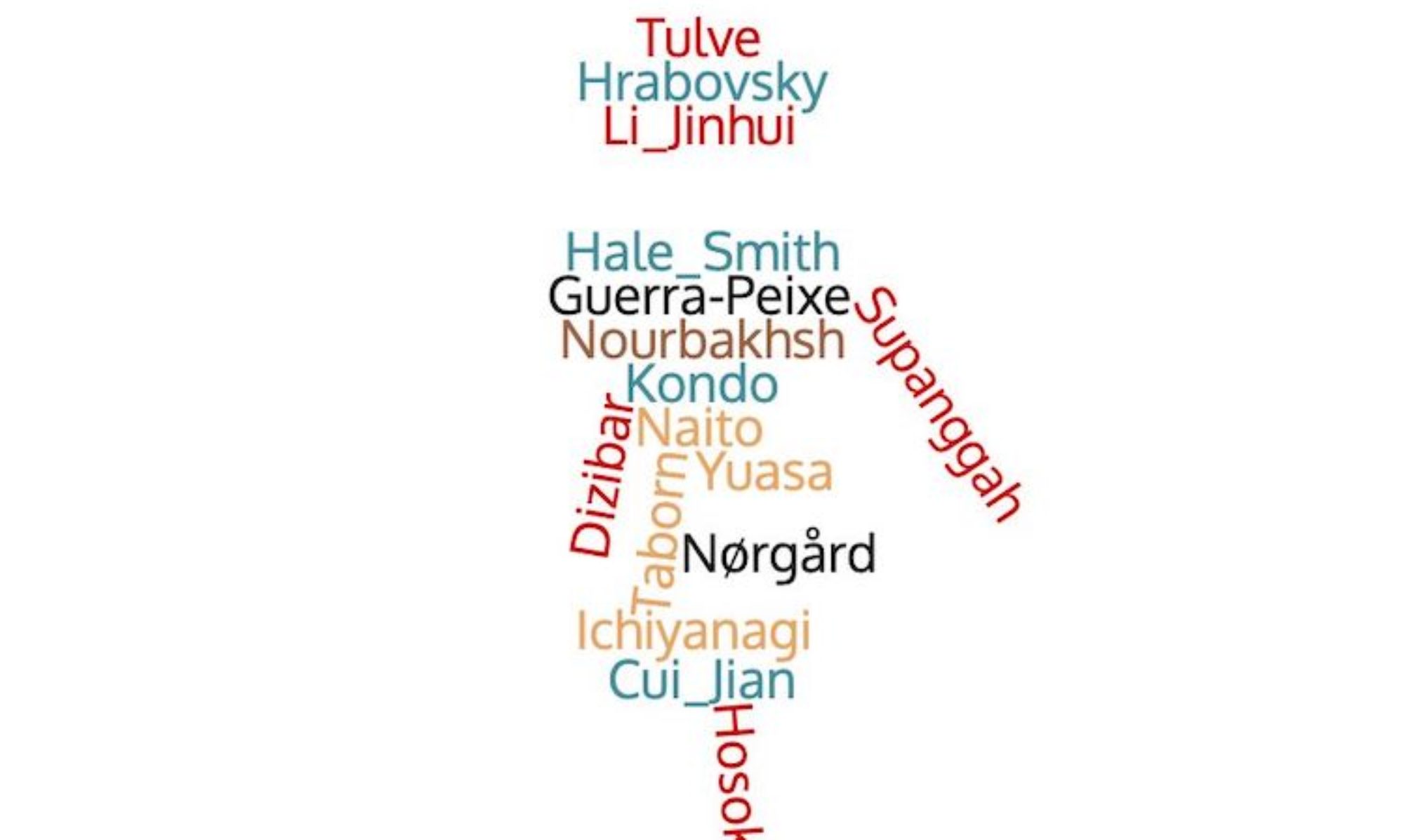By Mao Mengdan and Min Lingkang
This post is part of a series on 100 modern conservatory-trained Chinese composers from 1912 onwards who wrote symphonic, ensemble, and solo instrumental music using Western instruments, as well as choral and solo vocal music, adopting Western tonality or avant-garde techniques. They are regarded as key historical figures in and drivers of modern Chinese music history.
He Lüting, originally named He Kai and He Anqing, was a prominent musician and educator in China. Born in July 1903 in Xianchaqiao, Shaodong, Hunan Province, He was a celebrated Chinese musician and educator. In 1931, he was admitted to the Shanghai National Conservatory of Music, where he majored in piano and harmony. (Capitalized “He” in this article generally refers to the composer using his last name.)
In 1934, He Lüting participated in a competition for Chinese-style piano compositions organized by the Russian composer Alexander Tcherepnin, winning first prize with “The Cowherd’s Flute” and an honorary second prize with “Lullaby.” This success led to his tuition being covered by the school. Pathé Records produced and distributed records of his award-winning pieces both domestically and internationally.
That same year, He entered the film industry, with Nie Er introducing him to the Star Film Company to serve as head of composition. He contributed to the leftist film movement by composing over a hundred songs, including “Song of the Boatmen,” “Song of the Porters,” “In Spring,” “Lament of Separation,” “Nostalgia,” “Love Song,” and “Autumn Water and the Beloved.” His songs “Song of the Four Seasons” and “Song of a Wandering Female Singer” for the film “Street Angel” became classic representatives of his film song composition and progressive films of the 1930s.
After the full outbreak of the Second Sino-Japanese War in 1937, He joined the Shanghai Literary and Artistic Circle’s Anti-Japanese Salvation Drama Troupe, performing in Wuhan, Zhengzhou, Xi’an, and other places to encourage resistance against Japanese invasion. In Linfen, Shanxi, he composed the anti-Japanese war song “Song of the Guerrillas” under the light of a kerosene lamp. He conducted this song at a high-level cadre meeting of the Eighth Route Army, achieving great success.
In October 1946, He served as the conductor of the Central Symphony Orchestra, deputy head of the North China People’s Cultural Work Troupe, and vice president of the Central Conservatory of Music. His compositions “Forward, People’s Liberation Army,” “March of New Democracy,” and “Youth of New China” became resounding battle songs during the war.
After the founding of the People’s Republic of China, He returned to his alma mater and served as the president of the Shanghai Conservatory of Music. He also founded the affiliated middle and primary schools of the Shanghai Conservatory of Music, training outstanding music talents at the primary, secondary, and tertiary levels for the country. His musical composition entered a new peak period.
He Lüting passed away in Shanghai on April 27, 1999.
The composition “The Cowherd’s Flute” was created in 1934 while He Lüting was studying at the Shanghai National Conservatory of Music. At that time, he lived in the main building of a sewing shop, where he studied, composed, and kept an eye on the music scene. Alexander Tcherepnin, a famous European composer and pianist, came to China to collect “national-style piano works” and posted an announcement at the conservatory. He Lüting worked tirelessly in his rented room in the sewing shop’s attic, producing “The Cowherd’s Flute,” “Lullaby,” and “Thoughts of the Past” for the competition.
Ultimately, “The Cowherd’s Flute” won first prize. Tcherepnin took the piano piece to Europe for personal performances and published it in Japan. Since then, the piece has become famous both domestically and internationally, becoming one of the most frequently performed Chinese works in concerts.
“The Cowherd’s Flute” uses melodic, harmonic, tonal, and rhythmic elements to create a fresh and flowing line with a two-part counterpoint melody that echoes and answers, depicting scenes of the shepherd boy herding, playing the flute, frolicking, and returning home. The piece employs a traditional folk dance style, with a lively rhythm and melody that vividly portrays the image of a carefree shepherd boy riding on a buffalo’s back and playing the flute.
The structure of “The Cowherd’s Flute” is simple, following a typical ternary form. Section A (measures 1-24) is in G so-mode (C pentatonic scale), 4/4 time, and consists of six phrases, each with four measures. The phrases contrast with each other, and the theme has a strong Jiangnan flavor. The exposition is slow, with a melodious and serene melody. It uses a two-part contrapuntal writing style, with the upper and lower parts responding to each other in a call-and-response manner, creating a complementary and alternating progression between the phrases.
The middle section (measures 25-52) is in G so-mode and 2/4 time. The music shifts from polyphonic to homophonic, with a higher pitch range, faster tempo, and folk dance rhythm, portraying the innocent and joyful play of the shepherd boy. This section contrasts sharply with section A in terms of thematic material, beat, tempo, harmony, musical texture, and mood.
Section A’ begins in G so-mode, then modulates to D re-mode, and finally fades out in the former mode. The use of jiahua bianzou (ornamented variation) technique achieves the purpose of making the music more graceful and dynamic.
You can watch a performance of He Lüting’s “The Cowherd’s Flute” at the following link: https://www.bilibili.com/video/BV1cv41147PD?share_source=copy_web&vd_source=4681f0684a5c74dd125d397ca5882ba3
